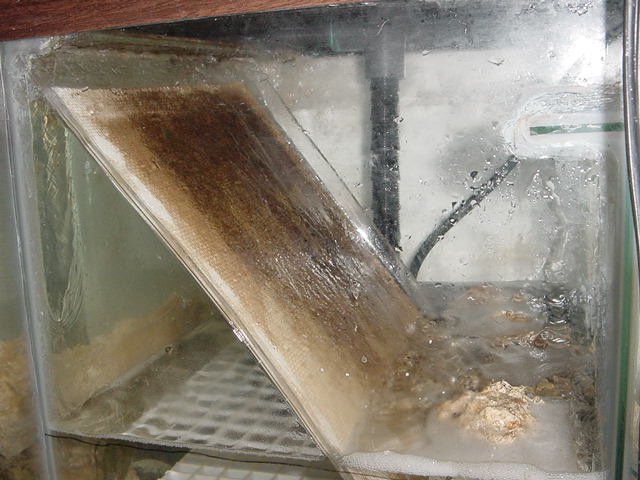I sure like the bright color of that star. This has been a nice thread and one of these days I may just have to try this scrubber out... That is, when I can start setting up my tank.
Mega-Powerful Nitrate and Phosphate Remover Replaces Skimmer, Refugium, part 1-4
- Thread starter SantaMonica
- Start date
You are using an out of date browser. It may not display this or other websites correctly.
You should upgrade or use an alternative browser.
You should upgrade or use an alternative browser.
Hi SantaMonica.Thanks for this thread, youve been very generous with your time and advice. Iset up a scrubber in my seahorse tank last week using a piece of mozzie net and a plastic support with two floats to keep it almost horizontal, so the flow is fairly even.The water bubbles up from underneath too , is this ok? Went down to the beach out of curiousity, to see real turf in action, we have plenty of the red kind growing.As a bonus collected some shrimps to keep the seahorses happy, and some chitons.
Update on LED scrubber, there are two spots of green growing already which are not visible in the shot.
I forget how many days now, but this is since my last picture posting.
I'd like to see your light fixture and learn more about that.
Well Oct 5th was Day 3 for you, so today would be Day 14.
Slow, but let's see what becomes of the green.
Slow, but let's see what becomes of the green.
.

.
.
.
.
Text Version:
Nutrients, part 3
The amount of Inorganic Nitrate and Inorganic Phosphate that a scrubber removes is directly controlled by how much light-power hits the scrubber:
1" - The light-power is full strength.
4" - At 4" distance, the same bulb power has to cover four times the area, so the power per square inch is only 25 percent of what is was (reduced 75%).
6" - At 6" distance, the same bulb power has to cover nine times the area, so the power per square inch is only 11 percent of what is was (reduced 89%).
This is why placing the bulb very close to the scrubber is extremely important.
.
.

.
.
.
.
Text Version:
Nutrients, part 3
The amount of Inorganic Nitrate and Inorganic Phosphate that a scrubber removes is directly controlled by how much light-power hits the scrubber:
1" - The light-power is full strength.
4" - At 4" distance, the same bulb power has to cover four times the area, so the power per square inch is only 25 percent of what is was (reduced 75%).
6" - At 6" distance, the same bulb power has to cover nine times the area, so the power per square inch is only 11 percent of what is was (reduced 89%).
This is why placing the bulb very close to the scrubber is extremely important.
.
.
Reminder of the Day: Proper Flow
While not as important as how strong and near the bulb is, proper flow has shown to help a lot. Before Mrobo770131 on the UR site got things tuned properly, his flow looked like this:

Zennzzo on the MFK site, however, got it perfect from the start:

The trick is to have 35 gph (adjustable) for every inch width of the screen. And this is assuming your waterfall pipe has a slot. If your pipe uses drilled holes (not recommended) then you will use less.
.
.
.
.
While not as important as how strong and near the bulb is, proper flow has shown to help a lot. Before Mrobo770131 on the UR site got things tuned properly, his flow looked like this:

Zennzzo on the MFK site, however, got it perfect from the start:

The trick is to have 35 gph (adjustable) for every inch width of the screen. And this is assuming your waterfall pipe has a slot. If your pipe uses drilled holes (not recommended) then you will use less.
.
.
.
.
A surge (i.e. "pulsed" flow) is designed to simulate waves at the beach, so that the algae will get a dry-time (say, 15, 30 or 60 seconds, NOT minutes). Dry time helps kill the green and slime algae (which can't live out of the water), and helps promote the real red/brown turf algae, which spends half it's time out of the water anyways. The less hair and slime that collects on the real turf, the more the real turf can get light and flow and thus do its filtering. Dry time also helps remove the boundary layer of water on the algae, which otherwise tends to reduce the transfer of nutrients back and forth from the algae to the water. To further simulate the beach, a fan can be added that will help dry off the algae when the flow is off. The more air, the better. Note that for a fan to work, however, the water must be pulsed; continuous water flow will not let the air get to the algae. Also note that the fan will do a lot of cooling too. Note, however, that non-pulsed scrubbers that grow only green hair and slime still do a great job. They just grow a lot.



